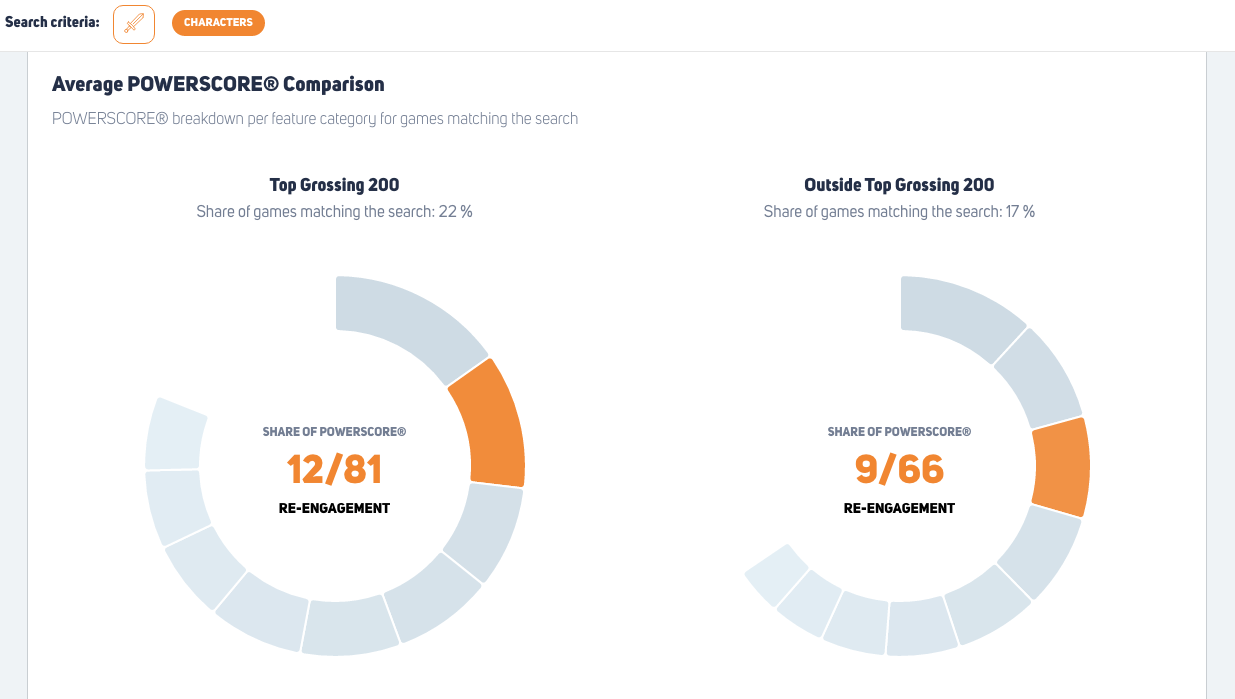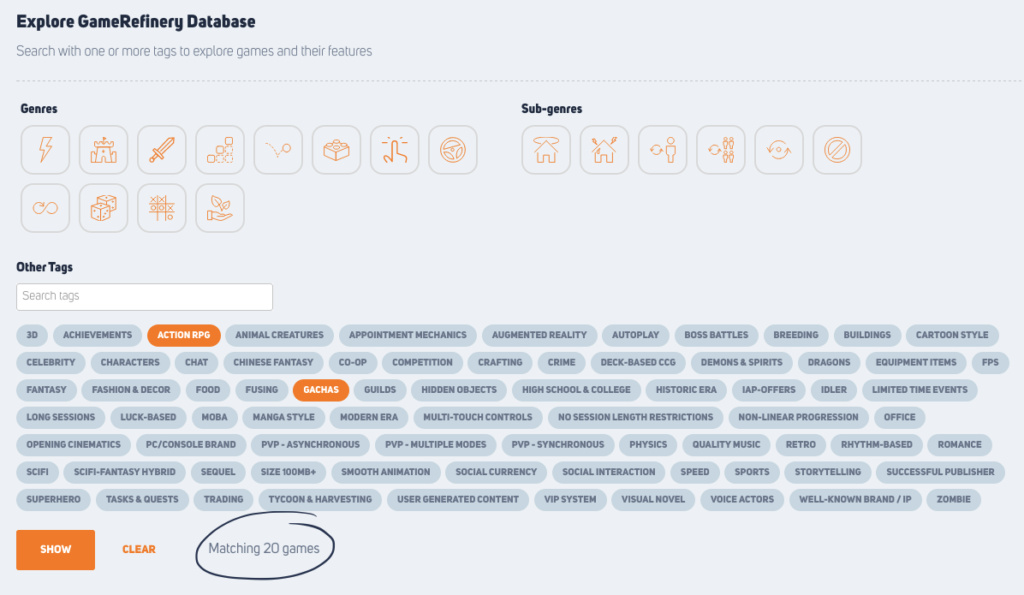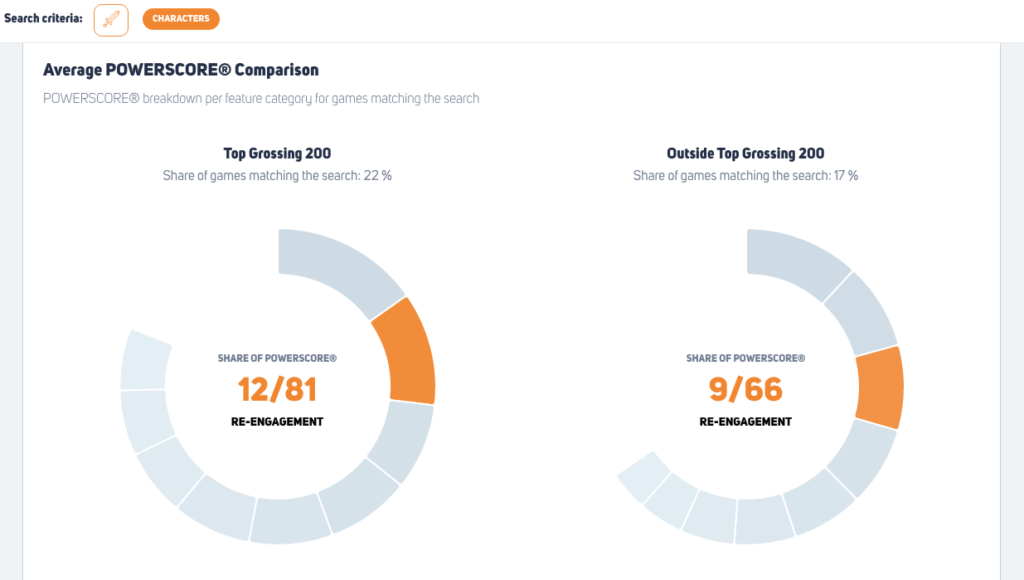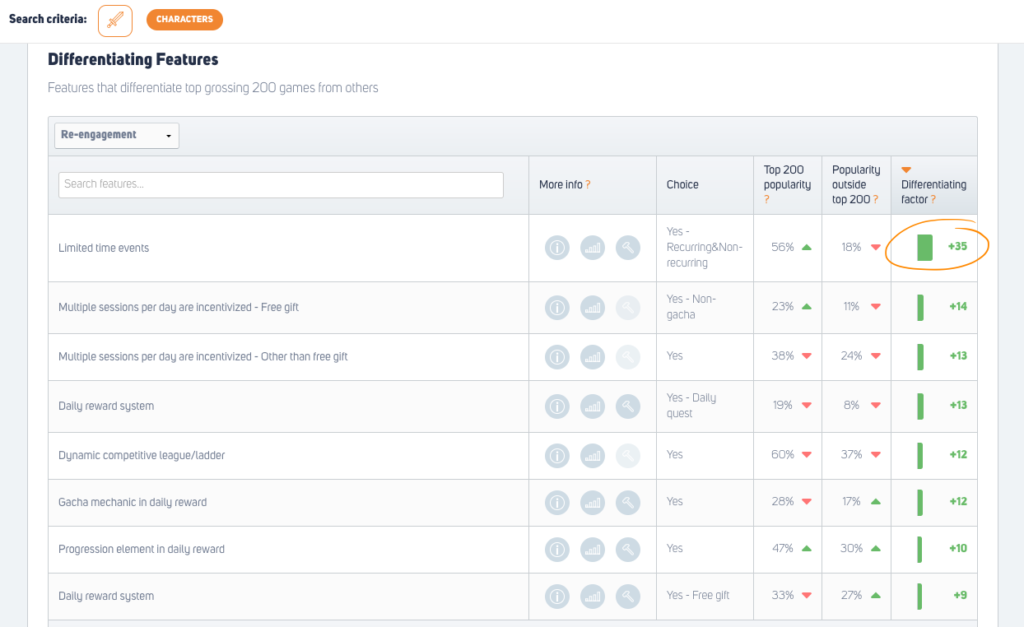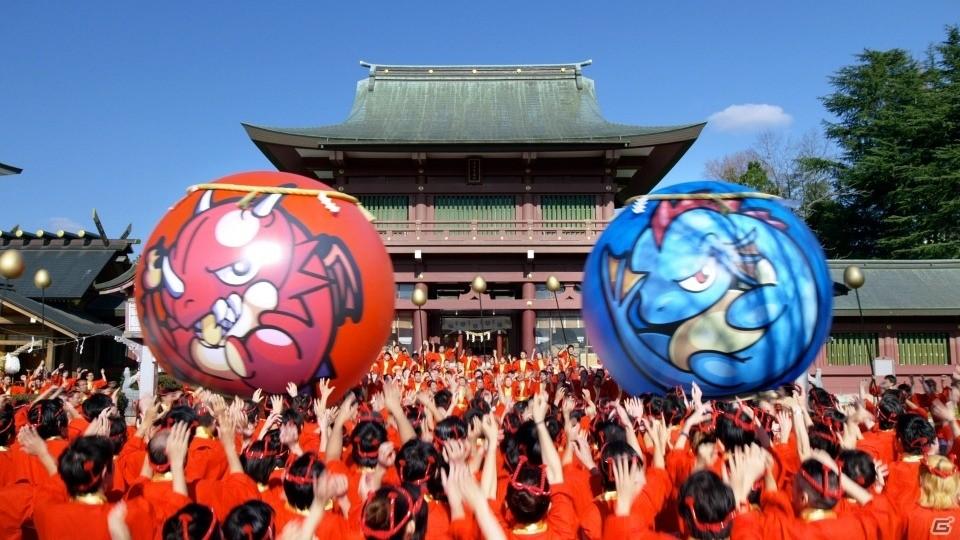Product-market-fit and why it’s important
As Jernström and Kanerva (PocketGamer.biz, 2016) argued, “with mobile games you need to create a product for a market, not find a market for the product you already created. The question is how to stand out among 800k games, and what features to implement to target that specific market or segment you’re aiming for”.
This is something a lot of game developers constantly face when designing new masterpieces and launching them out to the world. Fortunately there’s help available and it comes in the form of market data and research. Having access to competitor data and feature trends enables you to not only differentiate your game from others but also to make sure you include all the bits and pieces that are trending in the market, i.e. the features that gamers today really enjoy.
It’s not just new games pouring to the market constantly, but new game features that help boost your revenues are also invented all the time. This constant change and evolution is very characteristic to mobile game industry, and by making sure you are always up-to-date on the latest “hots and nots”, your game’s chances of success are increased significantly.
Below, we’ll show you how to conduct preliminary market research, test and work on your game idea by benchmarking and using data from GameRefinery service.
Start with Market Research
The Game Explorer of our service is great for finding games that match certain criteria and for seeing how those games map in a given market. You can use it to:
- Search games by high-level genre or defining mechanic, such as match-3 games or idler games
- Search by a more specific group of features, e.g. games with Guilds, PvP and Limited time events -features.
For the games matching your search criteria you’ll find:
- Average POWERSCORE®s in and outside Top Grossing 200 – a good indicator telling how many and what type of games there are, and what is their typical structure
- Most important features for the games matching the criteria
- A list of games matching the search – see how many of those games have reached the Top Grossing list
Getting started with Game Explorer
A good way to start is to browse the game database by choosing one or two high-level criteria, e.g. genre or a defining mechanic. You’ll see the number of games matching the search in real-time, as demonstrated in the picture below.
Start by making a few searches with the tags you’re interested in or which match your own game or game concept.
Average POWERSCORE® Comparison gives you a good benchmark on what you might want to aim for when working with your own game concept in the Game Analyzer (a tool to map your own game’s feature set and estimate its revenue potential). POWERSCORE® is a unique KPI measuring the competitiveness of the game’s overall feature set, and it helps you to understand and calculate the money-making potential of your game. The higher this KPI, the more powerful your feature set, and the greater the probability that your game will reach and sustain a higher top grossing ranks.
By interacting with the circles, you can compare how feature categories contribute to the POWERSCORE® on average. In the example above, the games in Top Grossing 200 score three points more on average in the Re-engagement category compared to the rest of the games. This means that, in this example, Re-engagement related features are the ones where the games that generate more revenue are ahead of the other games. In this way the feature is very useful in spotting possible development areas and main differentiating factors in various types of games and gives you idea where to focus on in your own game.
Next, you probably want to know where exactly in Re-engagement category the biggest differences are to get more actionable insights. That’s where the Differentiating Features comes in play: you’ll find a list of the most differentiating features (meaning they are more popular in successful games than other games) for the games matching the search. In this particular case, Limited time events – feature stands out as the main differentiating factor, as shown in the picture below.
Below the Differentiating Features, you’ll find lists of Games Matching the Search. If you don’t find any games, it might imply that you’re working on a unique game concept.
However, it’s good to remember that the GameRefinery’s database covers pretty much every game that has been able to sustain a position in the Top Grossing 200 list of the given market, so if you can’t find any games matching your search, the reason could be that there simply hasn’t been any.
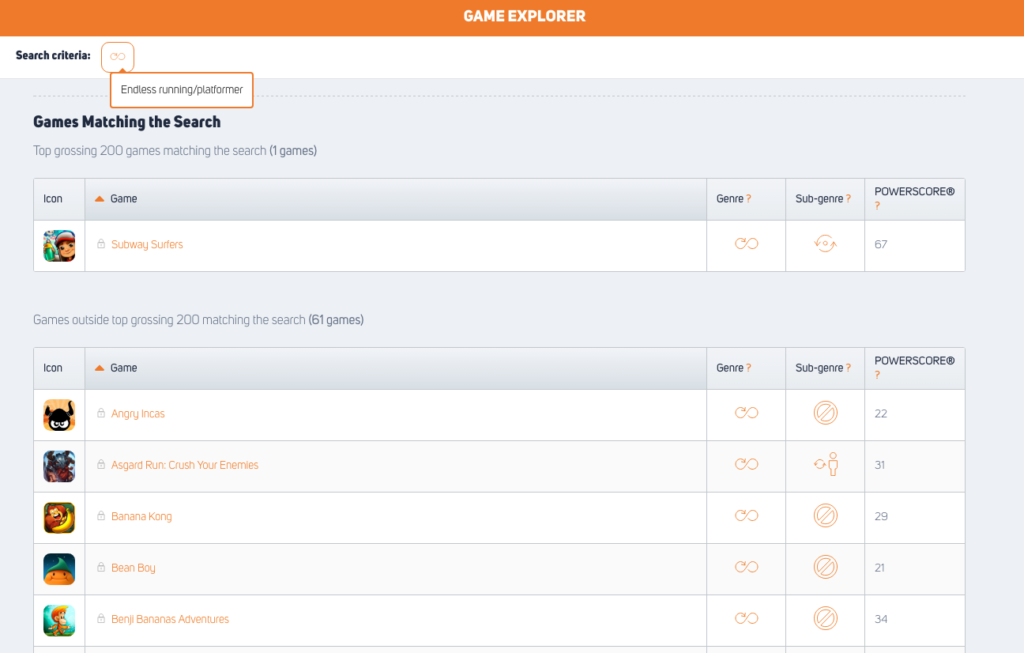
If you’re planning to get to the Top Grossing list, it’s usually a good sign that at least somewhat similar games have been able to climb to the top positions. We’re not saying that you should copy the top grossing games – there is always room for innovation – but the cold fact is that according to data, certain types of games are more likely to make more IAP-based money than the others (see the picture above).

